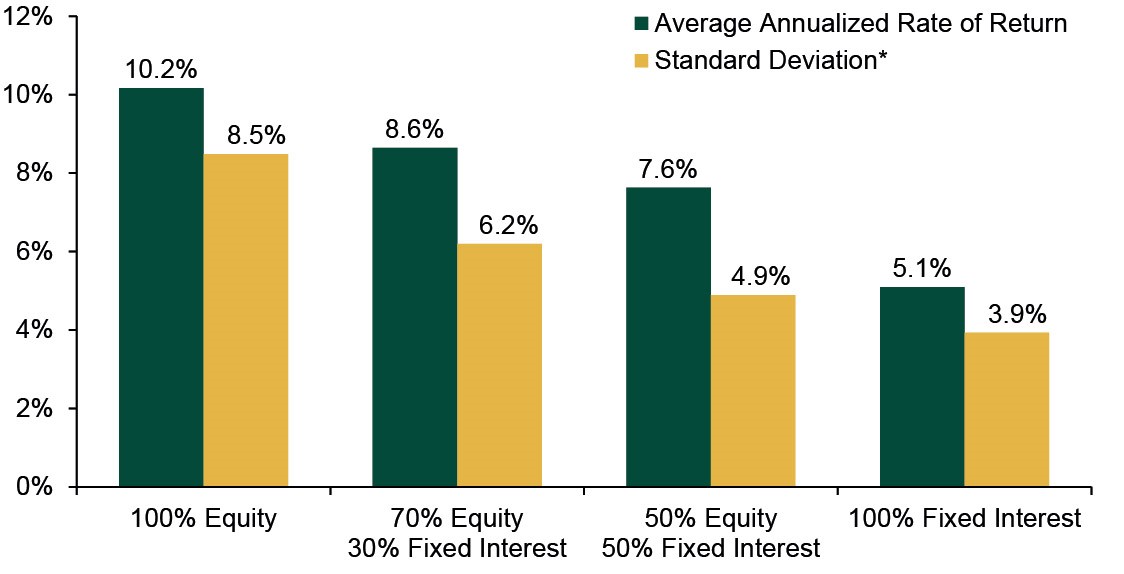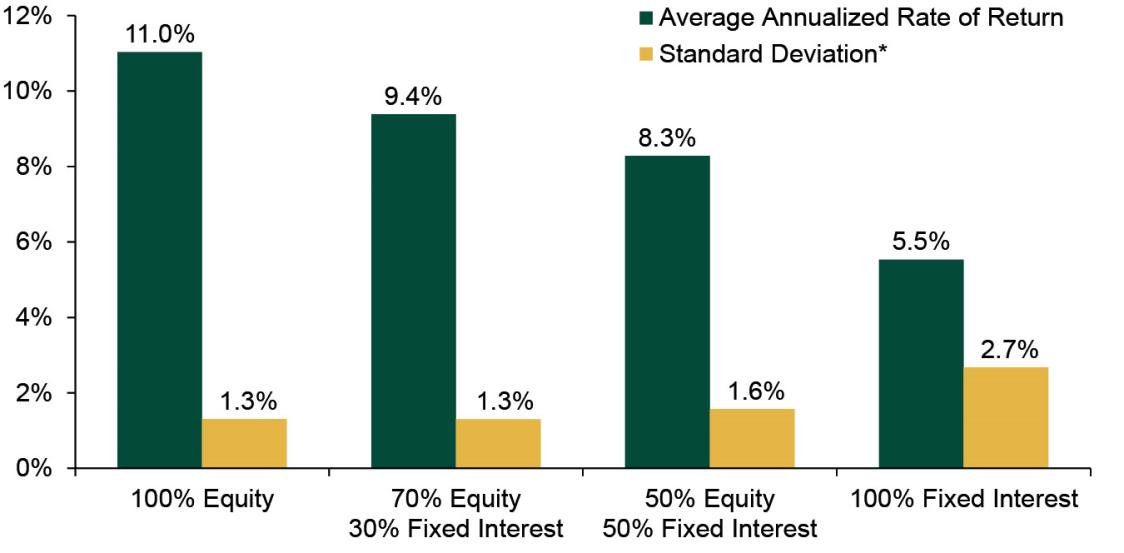Personal Wealth Management / Market Volatility
Stock Market Volatility
Market volatility can be difficult for investors to endure. Learn more about what market volatility is and how it could affect your portfolio.
Key Takeaways:
- Market volatility, or how much prices move over time, can be negative or positive.
- Historical volatility does not predict future volatility.
- A long-term investing strategy will generally involve enduring periods of volatility.
Few things stoke as much fear in the hearts of stock market investors as market volatility. Consider the financial media’s sensationalism when covering market pullbacks and corrections – much like the current environment. Visit our MarketMinder page for the most up-to-date views on the Russia/Ukraine situation.
Market volatility is not always negative and may sometimes be necessary for investors requiring higher long-term investment growth. In this article, we’ll explain what volatility is and how it could impact your investment portfolio.
Market Volatility Explained
Market volatility refers to how much returns vary from their averages over time. Volatility can occur in several different types of investments or market indexes, but most investors seem to associate volatility with stocks.
Stock prices can rise and fall over time—sometimes quickly, sometimes slowly and often unpredictably. In essence, volatility can happen at any time for any reason or no reason at all. Even though investors often associate the word “volatility” with risk or loss, volatility can be positive or negative—stock prices can move up or down. Additionally, stock prices may swing unpredictably from day to day but can settle over time. As you look over longer periods, even the most violent swings can look like smoother fluctuations along a broader trend. If individuals can tolerate investing through short-term swings, they may be rewarded with higher returns over the long term.
It is natural to fear volatility, as times of uncertainty and change can be extremely challenging. However, volatility is often unpredictable and can be short-lived. Volatility today tells you nothing about the markets tomorrow. Trying to time portfolio trades to sidestep volatility is a nearly impossible task and could seriously harm investment returns over the course of a portfolio's lifetime.
Viewing Volatility More Clearly
Historical volatility can be valuable in evaluating the risk/reward ratios of potential investments over different periods. For example, Exhibit 1 shows standard deviation (one way to measure market volatility) and average returns for different allocations of stocks and bonds over 5- and 30-year rolling periods. Over shorter time periods, like 5-year rolling periods, stocks have higher average returns and a higher standard deviation than bonds. However, over 30-year rolling periods, stocks have higher average returns with a lower standard deviation than bonds. The historical volatility associated with a portfolio of stocks relative to bonds smooths out over longer periods of time. That means, for longer-term investors, an all-stock portfolio may actually be safer than investing in bonds, depending on the circumstances. However, many investors fail to realize stocks’ long-term growth potential because they react to stocks’ short-term swings and make costly investing errors.
Exhibit 1: Long-Term Asset Allocation
5-Year Rolling Periods

30-Year Rolling Periods

*Standard deviation represents the degree of fluctuations in historical returns. The risk measure is applied to 5- and 30-year annualized returns.
Source: Global Financial Data, as of 12/31/2023. 5- and 30-year rolling returns from 12/31/1925 - 12/31/2023. Equity return based on the S&P 500 Total Return Index. Fixed income return based on Global Financial Data’s USA 10-Year Government Bond Index.
Staying Calm During Periods of Heightened Volatility
Markets can be challenging for investors to navigate. Even bull markets are subject to negative volatility, as uninterrupted periods of rising prices are rare in the long term. Therefore, even as stock markets rise, fear and volatility along the way are common.
Bull markets often feature multiple corrections—short, sharp, sentiment-based declines of roughly -10% to -20% that typically end just as quickly as they began. Although corrections are common in bull markets, they can still surprise and scare many investors. While difficult, we recommend investors stay calm during periods of heightened market volatility, as they may risk making fear-based decisions that might hurt their long-term portfolio returns. Corrections can be triggered by any number of events, including geopolitical tensions, elections, economic news or natural disasters. Other times, corrections may happen for no reason at all. Like other forms of market volatility, corrections are unpredictable and very difficult to anticipate.
Fortunately, these types of events are often not big or bad enough to cause a full-fledged bear market, which is a fundamentally driven market decline of approximately 20% or more. Although investing through a bear market or a correction is often difficult, it may be worthwhile to weather the storm.
Investing with Discipline
Since market corrections are often fear-based and can start or stop for any (or no) reason, trying to make trades in reaction to this volatility can sometimes do more harm than good. Even the most experienced investors could make poorly timed or harmful trades in their portfolios when attempting to time corrections.
Reacting emotionally to recent stock price swings may leave you trading at a loss if you buy or sell stocks at the wrong times. Abandoning a measured and long-term strategy to focus on short-term market opportunities or to avoid short-term declines can introduce risk at the expense of your longer-term objectives.
Often, the best move during periods of negative short-term market volatility may be to stay invested to make sure you capture all of a bull market’s long-term positive returns. Investment management is a long-term practice and investor discipline almost always trumps attempts at market timing.
How Fisher Investments Can Help
It can be difficult to stay disciplined in a volatile stock market. The fear of loss could lead you to make rash and emotional short-term decisions. Fisher Investments is committed to educating investors and helping them guard against this kind of behavior.
Our experienced Research Department has a deep understanding of market risks relevant to client portfolios and our client service professionals are available to help guide you through times of increased market volatility and help keep you on the path to your long-term financial goals. Contact us today to learn more.

Where Might the Market Go Next?
Confidently tackle the market’s ups and downs with independent research and analysis that tells you where we think stocks are headed—and why.





